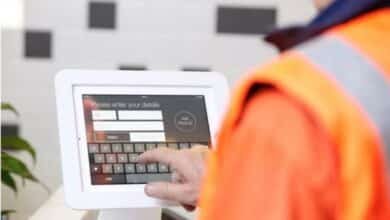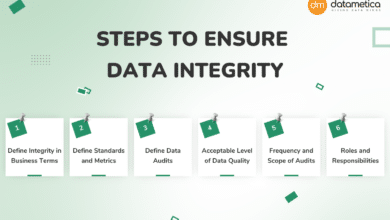
What Are Rechargeable Batteries?
Unlike disposable batteries, you can recharge them and use them again. The most common types include lithium-ion, nickel-metal hydride (NiMH), and nickel-cadmium (NiCd).
Types of Rechargeable Batteries
- Lithium-Ion (Li-ion): Found in smartphones, laptops, and electric vehicles.
- Nickel-Metal Hydride (NiMH): Often used in household items like remote controls and flashlights.
- Nickel-Cadmium (NiCd): Common in older devices and power tools. They have a lower capacity compared to newer technologies but are robust and reliable.
Advantages of Using Rechargeable Batteries
Cost-Effective
While the initial investment for rechargeable batteries is higher than disposable ones, they can be recharged hundreds of times. This ultimately saves you money.
Eco-Friendly
Rechargeable batteries reduce waste. By using them, you help minimize the number of batteries that end up in landfills.
Reliable Performance
Rechargeable batteries often provide consistent power output. They can also handle a high number of charge cycles compared to disposable batteries.
Understanding Battery Charging Basics
To charge rechargeable batteries effectively, it’s crucial to understand a few key concepts.
Charge Cycles
A charge cycle refers to the process of fully charging a battery and then discharging it completely. Most rechargeable batteries have a limited number of charge cycles. For instance, a typical lithium-ion battery can handle around 300 to 500 cycles before its capacity diminishes significantly.
Depth of Discharge
Depth of discharge (DoD) is the percentage of the battery that has been discharged relative to its total capacity. For lithium-ion batteries, it’s best to avoid deep discharges. Aiming for a 20% to 80% charge range is ideal.
How to Charge Rechargeable Batteries
Charging rechargeable batteries is a straightforward process, but there are best practices to follow.
Step 1: Gather Your Supplies
You will need:
- The rechargeable batteries you intend to charge.
Step 2: Check the Battery Condition
Before charging, inspect your batteries for any visible damage. Look for leaks, corrosion, or swelling. If you notice any issues, do not attempt to charge them.
Step 3: Insert Batteries into the Charger
Place the batteries into the charger, ensuring they are oriented correctly. Most chargers have clear markings for positive (+) and negative (-) terminals. If you insert them incorrectly, it may damage the battery or charger.
Step 4: Connect to Power
Plug the charger into a suitable power source. Make sure the connection is secure. Many chargers come with indicator lights to show charging status.
Step 5: Monitor the Charging Process
Charging times vary by battery type and capacity. Generally, it takes a few hours to fully charge most rechargeable batteries. Check the charger’s manual for specific charging times.
Step 6: Disconnect When Fully Charged
Overcharging can lead to decreased battery life and performance. Some chargers automatically stop charging when batteries are full, but it’s good to double-check.
Tips for Efficient Charging
1. Avoid Deep Discharges
Try not to let your rechargeable batteries drain completely. This can reduce their lifespan. Charge them when they reach around 20% capacity.
2. Charge in a Suitable Environment
Charge your batteries at room temperature. Extreme heat or cold can negatively affect performance and safety.
3. Regular Maintenance
For NiCd batteries, consider performing a full discharge and recharge cycle occasionally. This can help maintain their capacity.
4. Store Batteries Properly
If you’re not using your batteries for an extended period, store them in a cool, dry place. Aim for about 40% charge for optimal storage.
Common Mistakes to Avoid
Overcharging
One of the biggest mistakes people make is leaving batteries on the charger too long.
Using Incorrect Chargers
Using chargers that aren’t designed for your battery type can result in damage. Always check compatibility.
Ignoring Age
Rechargeable batteries don’t last forever. If you notice that your batteries discharge quickly or don’t hold a charge, it may be time to replace them.
Signs It’s Time to Replace Your Battery
- Rapid Discharge: If your rechargeable batteries drain quickly after a full charge, they may be nearing the end of their life.
- Physical Damage: Look for signs of swelling, leaks, or corrosion.
- Inconsistent Charging: If your batteries struggle to charge or show inconsistent performance, it might be time for a replacement.
Best Practices for Battery Care
1. Regular Usage
Use your rechargeable batteries regularly. Batteries that sit unused for long periods can lose their capacity.
2. Avoid Extreme Temperatures
Store and charge your batteries away from extreme heat or cold. High temperatures can cause leaks and reduce capacity.
3. Follow Manufacturer Guidelines
Always refer to the manufacturer’s instructions for specific charging practices and care tips. Each type of battery may have unique requirements.
Conclusion
Understanding how to charge rechargeable batteries correctly is vital for maximizing their lifespan and performance. By following the steps and tips outlined in this guide, you can ensure your batteries serve you well for years to come. Whether you use lithium-ion, NiMH, or NiCd batteries, proper care and charging techniques will help keep your devices running smoothly.
Investing a little time in battery maintenance can save you money and reduce environmental impact. With these best practices, you’ll enjoy reliable performance from your rechargeable batteries every time you need them. Happy charging!




